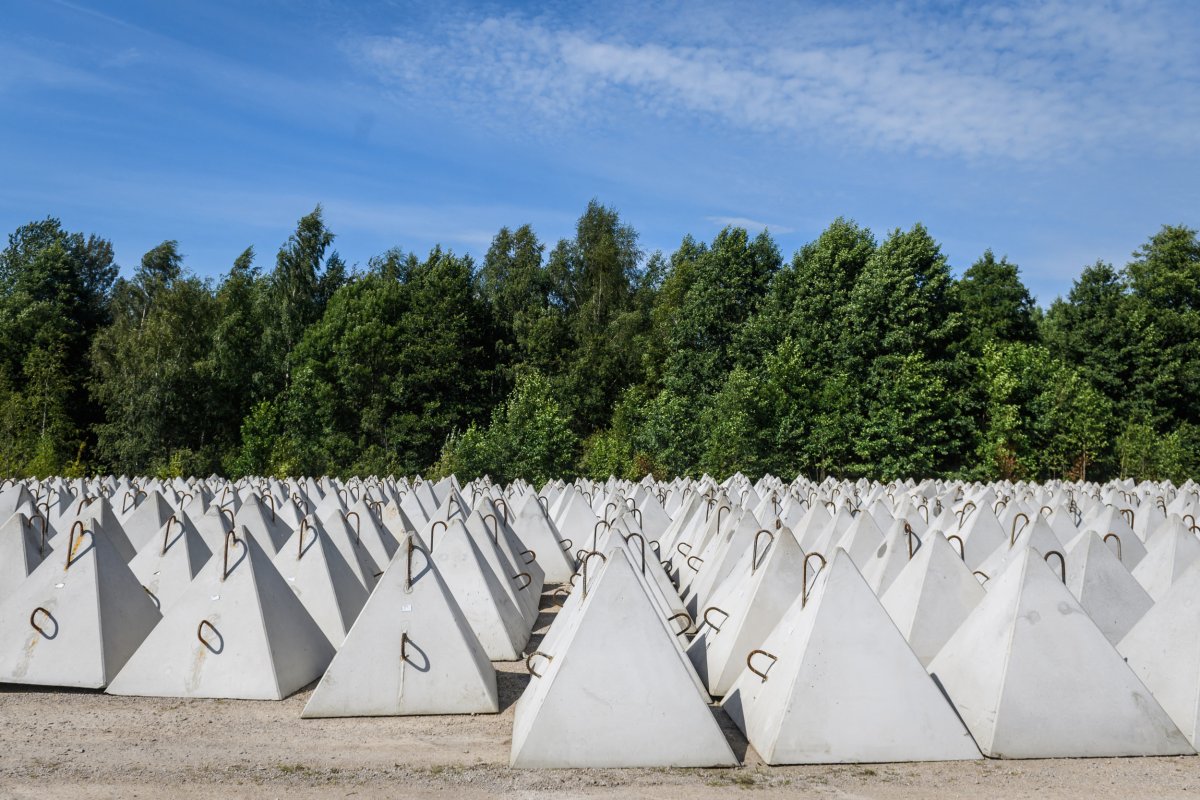Leaders in Europe have repeatedly warned that Russian President Vladimir Putin’s aggression would not just stop at Ukraine, as maps by Newsweek show potential flashpoints if Moscow were to take its belligerence further on the continent.
German Defense Minister Boris Pistorius has raised this prospect, saying in a newspaper interview in June that Putin “might even attack a NATO country” and to the parliament, the Bundestag, “we must be ready for war by 2029.” In November, the head of Germany’s foreign intelligence service, Bruno Kahl, echoed this view that Moscow is “preparing for a war with the West.”
Russia has already framed its war with Ukraine as a proxy war between Moscow and NATO; however, under Article 5 of NATO’s charter, it is only a strike on one member that would trigger a collective response, even if hybrid attacks test this definition.

Sean Gallup/Getty Images
“There is little doubt that Putin will continue to aggressively pursue his interests in Europe, and Eastern Europe in particular,” William Muck, a political science professor at North Central College, told Newsweek.
“If there is one motivating factor for Putin over the last 25 years, it has been NATO expansion,” Muck said. “He will look to exploit any crack to advance Russian influence across the region.”
As well as Berlin, NATO’s eastern flank and its new joiners are the most vocal in their concerns about Putin’s prospective imperial ambitions beyond Ukraine.
Swedish Civil Defense Minister Carl-Oskar Bohlin said that “war could come to Sweden” on the same day the country’s commander-in-chief, Micael Bydén, warned Swedes to “prepare themselves mentally” for conflict.
As one Newsweek map shows, NATO’s northeastern flank, which includes neighboring Finland’s 830-mile-long frontier, could be a possible front. The Nordic country that joined the alliance in 2023 has already accused Moscow of stoking a migrant crisis at its border.
Lieutenant General Jürgen-Joachim von Sandrart, the former head of NATO’s Multinational Corps Northeast, previously told Newsweek that Moscow had “multiple options” to test the alliance’s cohesion, including “limited land grabs.”
“As we think about potential future flashpoints, the Baltic states stand as an important test case of the strength of the NATO deterrent,” said Muck. “Estonia, Latvia, and Lithuania have large Russian populations—usually an important motivating factor for Putin interventionism.”
In February, Estonia’s foreign intelligence service said that NATO “could face a Soviet-style mass army in the next decade” if Moscow reforms its military. Meanwhile, in neighboring Lithuania, anti-tank concrete pyramids known as “dragon’s teeth” were installed.
Their location next to the Russian exclave of Kaliningrad is strategically significant as a potential front line in any conflict between Moscow and the alliance.
As Newsweek’s map highlights, the Suwalki corridor, also known as the Suwalki Gap, could be the first point of contact for any move by Moscow on NATO because it separates the Russian exclave of Kaliningrad on the Baltic Sea from Belarus.
It also hosts thousands of Russian troops, advanced fighter jets and nuclear weapons and is the only road or rail link between Poland and Central Europe to the Baltic states.
Sensitive to this threat, Estonia and Latvia, which share a border with Russia, signed an agreement with Lithuania in January to beef up land borders with Russia and Belarus as part of the Baltic Defense Line.
Meanwhile, the Commander Task Force Baltic center in the German port city of Rostock was inaugurated last month to beef up NATO’s supervision of the Baltic Sea.
“While states bordering Russia have rightfully expressed heightened concern, it is likely that Putin will remain deterred by NATO and focus his military adventurism on non-NATO states with large Russian populations—think Moldova and Ukraine.”

GINTS IVUSKANS/Getty Images
Moldova President Maia Sandu accused Moscow of Russian interference in elections and raised concerns about Moscow influencing the former Soviet republic, of which the breakaway Transnistria region is a part.
Soon after the start of the war in Ukraine, Russian commander Rustam Minnekaev said in April 2022 that Moscow wanted to establish a corridor through southern Ukraine to Transnistria, an area shown by Newsweek‘s map. It raised questions about how the separatist enclave, which hosts a Russian military presence, might fit into Putin’s plans.
Other parts of Europe could also be vulnerable. As previously reported by Newsweek, Mark Montgomery, a retired U.S. rear admiral, said Russia’s influence in smaller conflicts in Georgia and Serbia could escalate further.
Montgomery said Putin has “been pushing the envelope with Serbia…and the Bosnians and Republic Srpska (the Serbian part of Bosnia)” and has also “leaned in hard” on Georgia, the former Soviet republic riven by protests against the governing Georgian Dream coalition which seek closer ties with Moscow.
Newsweek’s map also shows this possible complication for NATO member Turkey, which borders the South Caucasus Republic, which fought a brief war with Russia in 2008. It led to an independence declaration by the breakaway region of Abkhazia, which has faced protests over pro-Moscow legislation.
“If the NATO alliance can remain unified despite Russia’s best efforts to foster chaos and division, it will dramatically decrease the chances of Putin expanding his war beyond Ukraine,” said Muck.

Uncredited/Donald Tusk on X




















